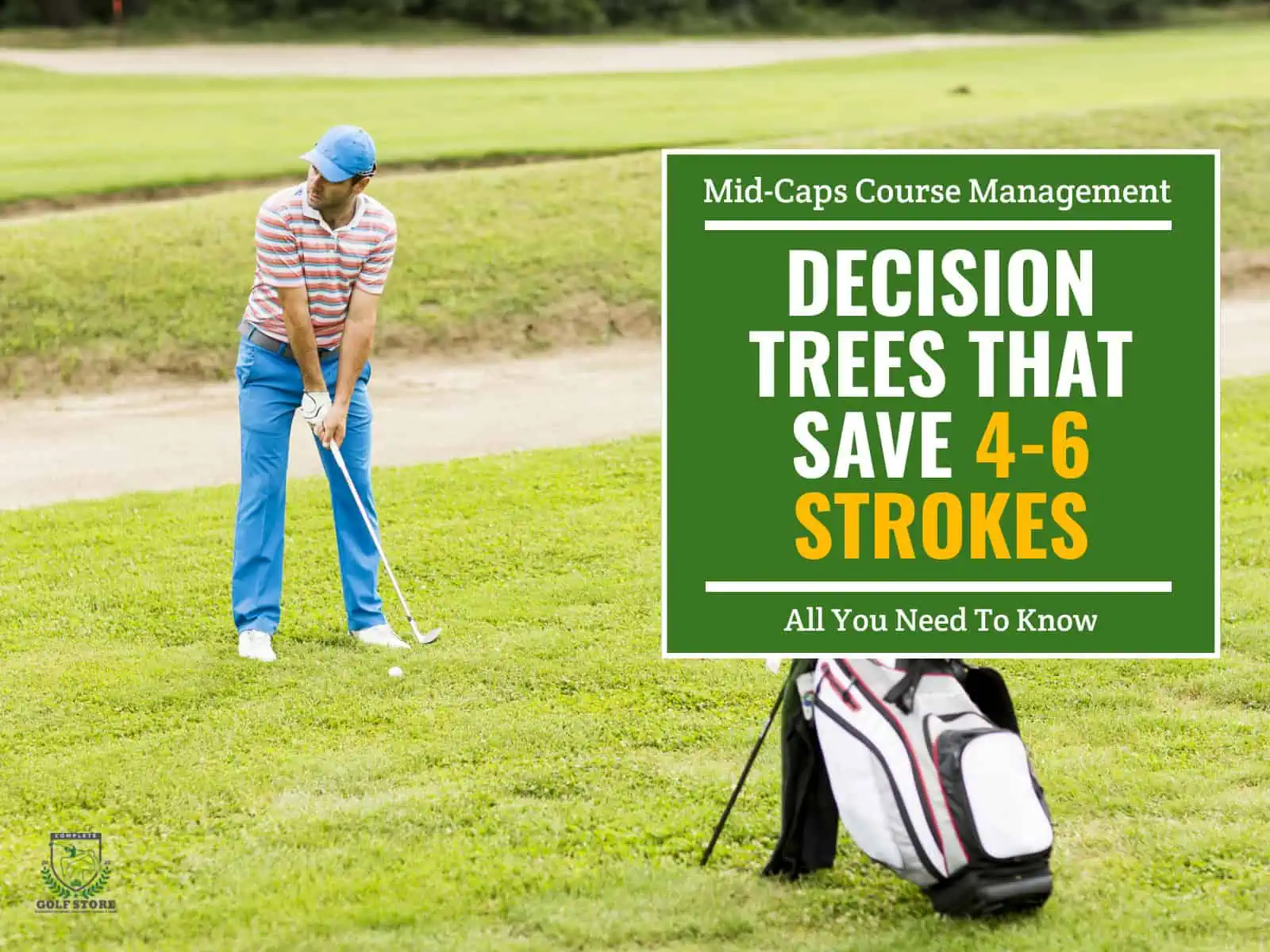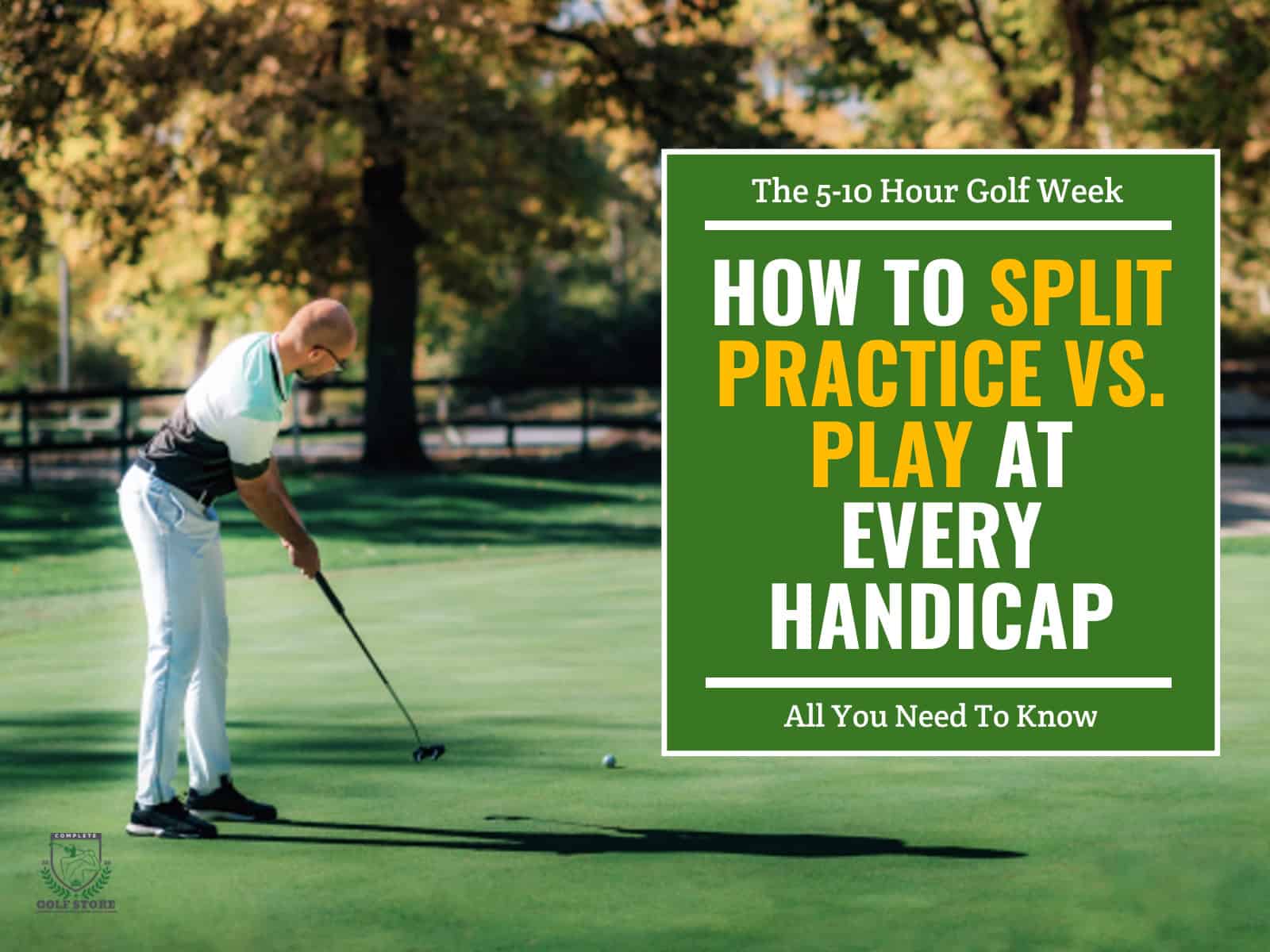Golf is a sport that can be enjoyed well into one’s golden years, but as we age, our equipment needs may change. One crucial aspect is the golf grip size.
For seniors, selecting the right grip size can make a significant difference in comfort, performance and overall enjoyment of the game. The proper grip size can alleviate joint pain, improve control and even enhance swing mechanics. However, with various factors to consider, such as hand size, arthritis (or other issues) and personal preference, choosing the ideal grip size isn’t always straightforward.
This article aims to guide senior golfers through the process of selecting the best grip size for their needs. We’ll explore the factors that influence grip size selection, discuss the benefits of different sizes and provide practical advice on how to make the right choice.
- 1) Determining the Right Grip Size
- 2) Special Considerations for Seniors
- 3) Benefits of Larger Grips for Seniors
- 4) Choosing the Right Grip
-
5)
Frequently Asked Questions
- 5.1) Are there specific grip materials that work better for seniors?
- 5.2) Can changing grip size affect a senior golfer’s swing speed?
- 5.3) Do temperature and weather conditions impact grip size choices for seniors?
- 5.4) How do grip sizes differ between men’s and women’s clubs for senior golfers?
- 5.5) Are there any potential drawbacks to using oversized grips for seniors?
- 6) Final Thoughts
Determining the Right Grip Size
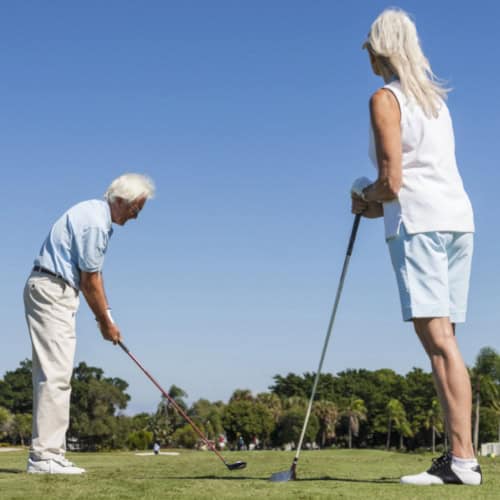
In general, and regardless of your age, choosing the right grip size begins with accurately measuring your hand. This simple process can determine which grip size might suit you best.
How to Measure?
To measure your hand size, start by placing your hand flat on a table, palm facing up. Using a ruler (or tape measure), measure from the crease of your wrist to the tip of your middle finger. Record this measurement in inches, as it will be crucial in determining your ideal grip size.
Size Guide Based on Measurements
Once you have your hand measurement, you can use it as a starting point to determine which grip size might be most appropriate.
- If your measurement is less than 7 inches, you might consider undersize grips.
- For measurements between 7 and 8.75 inches, standard grips are typically suitable.
- If your hand measures between 8.75 and 9.25 inches, midsize grips may be more appropriate.
- For those with measurements over 9.25 inches, oversize (Jumbo) grips could be the best option.
While these general guidelines are helpful, finding your ideal grip style for golf involves more than just measurements. Additional factors (discussed below) help pinpoint the most comfortable and effective grip for your game.
Additional Considerations
While hand size measurement provides a solid foundation, it’s important to remember that it’s not the only factor to consider. Hand shape, finger length and personal preference all play significant roles in determining the ideal grip size.
Some golfers find the “finger test” to be a useful complement to hand measurement. To perform this test, grip the club normally and observe how your fingers sit on the grip. If your fingers barely touch your palm, the grip size is likely correct. However, if your fingers dig into your palm, the grip may be too small, and if there’s a noticeable gap between your fingers and palm, the grip might be too large.
Special Considerations for Seniors
When selecting the ideal grip size, seniors should take into account several factors beyond just hand size. These considerations can significantly impact comfort and performance.
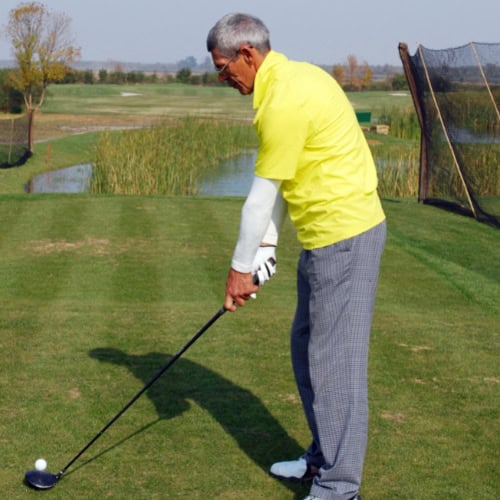
Arthritis and Joint Pain
Many seniors experience arthritis or joint pain, particularly in their hands and wrists. This can greatly affect their ability to grip the club comfortably and maintain control throughout the swing. For those dealing with these issues, a larger grip size can often provide relief and improve playability.
Larger grips reduce the amount of pressure needed to hold the club securely, which can alleviate stress on arthritic joints. They also minimize the amount of wrist action required during the swing, potentially reducing pain and discomfort. Some seniors find that oversized or jumbo grips, or even specially designed arthritic grips, offer the most comfort and control. Companies like Lamkin and Yamato provide excellent arthritic grips.
Swing Characteristics
As we age, our swing tendencies often evolve. Many seniors develop a slower swing speed and may struggle with consistency. Grip size can help address these changes.
A slightly larger grip can help reduce excessive hand action during the swing, promoting a more stable and controlled motion. This can be particularly beneficial for seniors who tend to over-rotate their hands, leading to hooks or slices. Conversely, some seniors with naturally smooth, rhythmic swings might prefer a standard or even slightly undersized grip to maintain their feel and touch.
As seniors adapt their swing to accommodate physical changes, equipment choices become increasingly important. Forgiving drivers for older players can complement these swing adjustments, offering features like larger sweet spots and lighter overall weight to help maintain distance and accuracy. These clubs are designed to work in harmony with the evolving swing characteristics of senior golfers.
Comfort and Feel
Ultimately, the most crucial factor in choosing a grip size for seniors is comfort and feel. A grip that feels comfortable in the hands can inspire confidence, reduce fatigue during a round, and contribute to more consistent ball-striking.
Seniors should experiment with different grip sizes to find what feels most natural and comfortable. This might involve trying out clubs with various grip sizes at a local pro shop or working with a club fitter. Pay attention to how the grip feels not just when addressing the ball, but throughout the entire swing and especially at impact.
It’s also worth considering the grip’s texture and material, as well as its size. Some seniors prefer softer, more tacky grips for enhanced feel and security, while others might opt for firmer grips with more feedback.
While grip size and material are crucial factors, seniors should also consider other equipment adjustments to enhance their game. Senior-optimized golf balls can complement the right grip choice, offering features like lower compression and higher visibility that cater to the specific needs of older players. These balls are designed to maximize performance for those with slower swing speeds, further improving comfort and consistency on the course.
Benefits of Larger Grips for Seniors
While not universally beneficial for all seniors, larger grips offer several advantages that can address common challenges faced by older players. Let’s explore these benefits in detail.

Reduced Hand Tension
Larger grips allow seniors to hold the club with less tension in their hands and forearms. This relaxed grip can improve overall swing rhythm and fluidity. With reduced tension, seniors often find it easier to maintain proper form throughout their swing, leading to more consistent ball-striking.
Additionally, decreased hand tension can alleviate fatigue during a round, benefiting those with stamina issues or conditions like arthritis.
Improved Club Control
As grip strength diminishes with age, larger grips provide more surface area for hand contact, enhancing overall control and stability. This improved control is particularly noticeable in the short game, where precision is crucial. Many seniors find larger grips allow better club face manipulation, resulting in more accurate chips, pitches and putts.
The added control can also help compensate for reduced flexibility or strength in other areas of the body, maintaining consistency in ball striking.
Lighter Grip Pressure
Larger grips naturally encourage a lighter grip pressure, which promotes better wrist hinge and release through impact, potentially increasing both distance and accuracy.
For many seniors, a lighter grip pressure enhances feel and touch, particularly in the short game, leading to better distance control on chips and putts.
While these benefits are significant, it’s important to remember that individual results may vary. Seniors should experiment with different grip sizes and consult a professional club fitter to find the optimal solution for their game.
Choosing the Right Grip
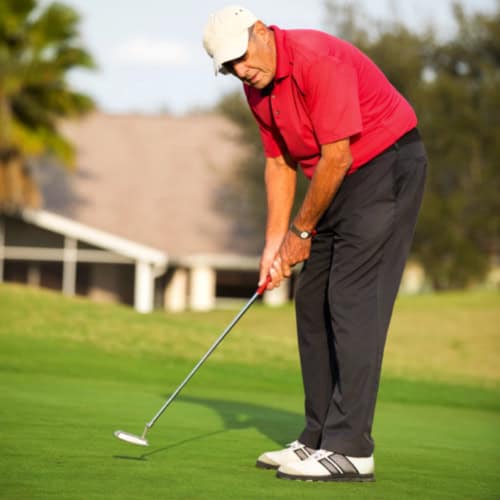
The process of selecting the optimal golf grip involves both personal experimentation and professional guidance.
The Importance of Experimentation
Experimentation is key when choosing the right grip size. Senior golfers should test various grip sizes on the driving range and practice green, paying attention to comfort, control and overall feel during full swings and short game shots. Notice any changes in swing mechanics or ball flight with different grip sizes.
It’s important to consider how different sizes affect hand and arm fatigue over several holes. What feels comfortable initially may not be the best option after extended play. Take the time to thoroughly test each size before making a decision.
The Value of Professional Consultation
While personal experimentation is valuable, the expertise of a professional club fitter can be invaluable. A club fitter can accurately measure hand size, assess grip strength and analyze swing characteristics. They provide access to a wide range of grip options and use advanced technologies like launch monitors and simulators to quantify the impact of different grip sizes on swing metrics and ball flight.
Based on their comprehensive assessment, club fitters can recommend specific grip sizes and materials tailored to individual needs. Their expertise will help you understand how grip size affects overall club performance and integrates with other equipment aspects.
Frequently Asked Questions
In this section, we will answer some commonly asked questions related to grip size for senior golfers. These will help you know more about the topic so as to make the best choice possible.
Are there specific grip materials that work better for seniors?
Yes, certain grip materials can be more beneficial for seniors. Softer, tackier materials like rubber or corded grips often provide better comfort and control for older hands. Some seniors prefer grips with a softer texture as they can be easier on arthritic joints.
Cord grips or hybrid materials that combine rubber and cord can offer excellent traction in various weather conditions, which can be particularly helpful for seniors who may have reduced grip strength.
Can changing grip size affect a senior golfer’s swing speed?
Changing grip size can indeed affect a senior golfer’s swing speed, though the impact varies by individual.
Generally, a larger grip might slightly reduce swing speed as it can decrease wrist action. However, this reduction in speed is often offset by improved control and consistency.
Some seniors may actually see an increase in swing speed with a properly fitted larger grip, as it allows for a more relaxed hold on the club, promoting a smoother, more efficient swing.
Do temperature and weather conditions impact grip size choices for seniors?
Temperature and weather conditions can influence grip size choices for seniors. In colder weather, hands may swell slightly, making a slightly larger grip more comfortable. Conversely, in hot weather, a standard or slightly smaller grip might be preferable as hands tend to sweat more.
It’s worth considering having different grip sizes for different seasons if you play in varied climates.
How do grip sizes differ between men’s and women’s clubs for senior golfers?
Grip sizes for men’s and women’s clubs generally differ due to average hand size differences. Women’s grips are typically smaller in diameter and shorter in length compared to men’s grips. However, for senior golfers, these standard differences may not always apply. Many senior women golfers find they prefer larger grips for comfort and control, while some senior men may opt for standard or even undersize grips.
The key is to choose based on individual hand size and comfort rather than gender-based standards.
Are there any potential drawbacks to using oversized grips for seniors?
Yes, there are potential drawbacks to consider. Extremely large grips may reduce feel and feedback, particularly in the short game where touch is crucial. They can also limit wrist action in the swing, which might negatively impact players who rely on this for power or shot-shaping.
Moreover, very large grips can be heavier, potentially affecting swing weight and tempo.
Final Thoughts
Choosing the right grip size is a crucial decision for seniors, one that can significantly impact their enjoyment and performance on the course.
We’ve explored the importance of hand size measurements, the special considerations for seniors, such as arthritis, changing swing characteristics and the potential benefits of larger grips. However, the most important tip is that there’s no one-size-fits-all solution. Each golfer’s needs are unique and influenced by physical conditions, playing style and personal preferences. The key to finding your ideal grip lies in a combination of experimentation and expert guidance.
If you have any questions or comments, don’t hesitate to get in touch with us.



